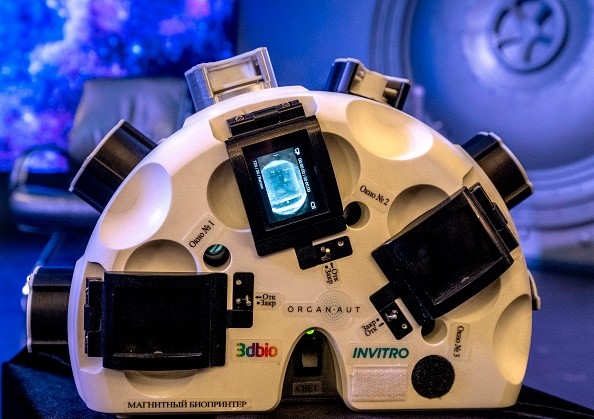The world has seen how 3D printing can alter industrial processes on Earth and beyond, but there's an emerging area of study looking at how it may be used to create living, biological structures.

New Type of Bioink Made From Microbes
In a new study, according to the researchers, the programmable Escherichia coli bacterial cells may be 3D-printed into hydrogels in various forms that release various drugs or absorb toxins depending on how they're built, according to Science Alert.
Unlike prior bioinks, this one uses genetic programming to regulate the ink's mechanical characteristics, resulting in superior final results and more practical implementation (some existing bioinks, for example, don't work properly at room temperature).
A tree has cells embedded inside it, and it grows from a seed to a tree by absorbing resources from its surroundings to carry out these structure-building programs, says Northeastern University's chemical biologist Neel Joshi.
Scientists want to accomplish something similar, but want to deliver those programs in the form of DNA that they create, as well as genetic engineering.
Also Read: A 3D-Printed Micro Camera That You Can Inject into Your Body
Bioengineering the Bacterial Cells
This works by bioengineering the microbes so that living nanofibers can be created.
An animal protein called fibrin was used to inspire the chemical process that made the fibers from E. coli cells and other substances.
These protein-based nanofibers may then be molded into different forms using a 3D printer. For the first time, a bioink without any artificial chemicals has been developed. It's squeezed out like toothpaste, but if you don't let it dry out, it can keep its form.
The method has so far only been used to make microscopic forms like circles, squares, and cones. However, the fact that scientists have demonstrated that microbial ink can be 3D printed opens up new possibilities.
If the entire cone is submerged in a glucose solution, the cells will consume the glucose, generate more fiber, and develop the cone into something larger, Joshi explains.
It is possible to make use of the fact that there are live cells present. However, scientists may simply destroy the cells and utilize the substance as an inert material.
The scientists mixed their bioink with other microorganisms in trials to absorb dangerous substances or deliver anticancer drugs. The ink might eventually self-replicate, says the researchers.
Uses of the 3D-printable Bioink
E. coli cells can be utilized to make a hydrogel that self-replicates when it comes in touch with a certain tissue, which might lead to a novel and sustainable manufacturing approach that could be employed on the Moon and Mars as well as on Earth.
Despite the fact that 3D-printable bioink has only been used on a small scale so far, it has the potential to be used in anything from self-healing structures to bottle caps that may remove hazardous pollutants from water in the future.
Biology can do the same, Joshi added. Consider the contrast between flexible hair and horns on a deer or a rhino. They share elements but perform completely distinct purposes. To modify such mechanical qualities, biology uses a restricted number of building blocks.
Related Article: Breakthrough: 3-D Printed Ovaries Could be the Key to Restoring Fertility
For more news, updates about 3D printing and similar topics don't forget to follow Nature World News!
© 2024 NatureWorldNews.com All rights reserved. Do not reproduce without permission.



![Venomous Centipede Could be Game-Changer and Save Lives of People with Kidney Disease [Study]](https://1471793142.rsc.cdn77.org/data/thumbs/full/70407/280/157/50/40/venomous-centipede-could-be-game-changer-and-save-lives-of-people-with-kidney-disease-study.jpg)

